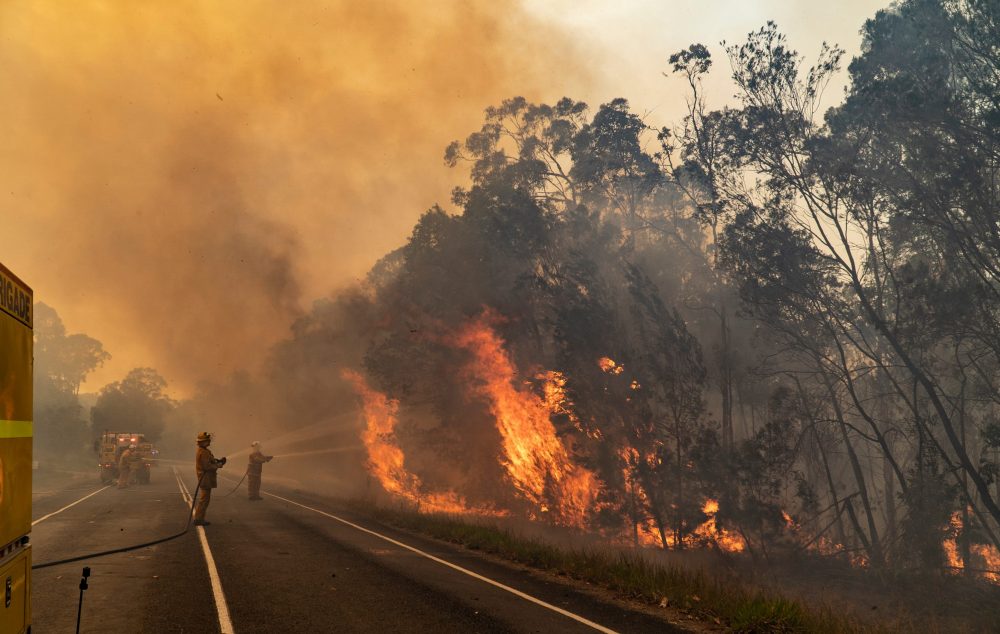The Value of Bushfire Management in Fire Protection
In the world of fire defense, the value of reliable bushfire management can not be underrated. As neighborhoods globally face enhancing instances of wildfires, the proactive technique to stopping and minimizing these natural disasters via tactical bushfire management approaches has actually arised as an essential component. Past the immediate danger to human life and residential property, the interaction in between bushfire monitoring and ecological preservation, area participation, and environment change poses complex difficulties that demand thorough options.
Importance of Proactive Bushfire Avoidance
Proactive bushfire avoidance approaches are vital in mitigating the ravaging impacts of wildfires on areas and ecological communities. One vital facet of positive bushfire prevention is fuel monitoring.
Informing the public on fire security methods and promoting community awareness about the importance of bushfire prevention are important components of aggressive techniques. Inevitably, proactive bushfire avoidance plays a significant duty in securing communities and ecological communities from the devastating effects of wildfires.
Role of Area Interaction in Fire Defense
Involving the neighborhood in fire security efforts is essential to improving the efficiency of positive bushfire avoidance strategies. Community engagement plays a vital duty in promoting a cumulative understanding of the dangers postured by bushfires and the relevance of preparedness procedures. By including regional citizens, authorities can distribute crucial info on fire safety and security techniques, discharge procedures, and very early warning systems, encouraging individuals to take positive actions to guard their homes and lives.
By cultivating a society of readiness and collaboration, communities can enhance their capability to react effectively to bushfire emergencies, decreasing the influence on lives and residential or commercial properties. Inevitably, area interaction is a keystone of extensive fire security techniques, stressing the importance of cumulative action in protecting prone areas from the risk of bushfires.
Significance of Wildlife Conservation in Bushfire Monitoring
Preservation of wild animals plays a vital function in effective bushfire monitoring methods, guaranteeing the protection of varied communities and biodiversity in fire-prone areas. Wild animals preservation is crucial as it contributes to the total resilience of ecosystems, assisting in their ability to hold up against and recuperate from the impact of bushfires. By conserving environments and shielding different species, the natural equilibrium within these communities is kept, which is vital for their lasting health and sustainability.
Moreover, wild animals conservation also assists in reducing the risk and strength of bushfires. Healthy environments with well-preserved wild animals populations can serve as all-natural firebreaks, slowing down the spread of fires and limiting their damaging capacity (BAL Report). Particular animal types, like tunneling animals or birds that spread out seeds, play distinct duties in protecting against fires or helping in the post-fire regrowth of environments
Integrating wildlife preservation into bushfire administration methods is not just crucial for safeguarding biodiversity but also for advertising the total health and wellness and durability of communities in the face of raising fire dangers.
Benefits of Strategic Fuel Decrease Programs
Tactically implementing fuel reduction programs is crucial in mitigating the danger and influence of bushfires in fire-prone areas. These programs entail controlled burning, mechanical clearing up, and various other methods to reduce the quantity of flammable greenery readily available to sustain wildfires. By my response strategically reducing visit this web-site gas tons in essential areas, such as near household neighborhoods or vital infrastructure, the strength and spread of bushfires can be considerably lowered.
Among the primary advantages of fuel reduction programs is the enhancement of total fire durability in a community. By developing calculated fuel breaks and minimizing the continuity of plants, these programs assist to disrupt the course of a bushfire, making it much easier for firefighters to consist of and snuff out the blaze. In addition, fuel decrease programs can protect biodiversity by stopping excessively extreme fires that can ravage habitats and endanger wildlife populations.
Additionally, these programs can additionally protect human lives and property by lowering the threat of tragic fires that posture a significant risk to neighborhoods. Ultimately, calculated gas decrease programs play an important duty in aggressive bushfire management and promoting a more secure atmosphere for both individuals and nature.
Impact of Climate Change on Bushfire Risk

Higher temperature levels lead to drier plant life, making it a lot more prone to ignition. Reduced rainfall in particular regions extends dry spell conditions, additionally enhancing the flammability of the landscape. In addition, the transforming environment has altered wind patterns and climatic problems, bring about even more erratic fire habits and fast fire spread.
As the environment remains to change, the regularity and strength of bushfires are anticipated to rise, demanding a adaptive and positive technique to bushfire monitoring. Methods have to evolve to represent the altering threat landscape, incorporating climate estimates and considering lasting durability in fire management preparation. Addressing the impact of climate change on bushfire risk is important in creating reliable strategies to secure lives, residential or commercial property, and the setting.
Verdict
In final thought, proactive bushfire prevention, neighborhood engagement, wildlife conservation, calculated fuel decrease programs, and factor to consider of environment adjustment are critical parts in effective fire defense. By applying these techniques, we can better take care of bushfire threats and shield both human lives and the setting. BAL Report. It is crucial that stakeholders interact to prioritize these procedures to lessen the disastrous effect of bushfires on ecosystems and areas

As the climate continues to alter, the frequency and intensity of bushfires are anticipated to increase, necessitating a positive and flexible strategy to bushfire administration.In conclusion, proactive bushfire prevention, area interaction, wildlife preservation, strategic fuel reduction programs, and consideration of climate modification are important parts in reliable fire security.